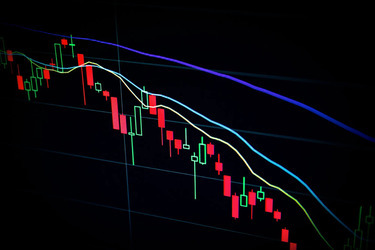The Indian stock market has gone through some tumultuous times. There have been times of complete market crashes. Then there have been times of sudden market booms. (Often taking place one after the other).
In this article, we’ll be taking a look at some of the major market movements and the factors behind them.
A market crash is defined as a sudden dramatic decline of stock prices across a major cross-section of a stock market. Such a crash usually results in a heavy loss of paper wealth.
A market crash might have many factors behind it.
Some of the most popular ones are:
- A prolonged period of rising stock prices across a wide variety of industries.
- Excessive market optimism.
- The market could become oversaturated at a point if the PE ratio of a large number of stocks becomes too high.
- If the market participants have been using high-margin debt and leverage.
- Or if there is certain negative news that’s going to impact the stocks in the future.
Here’s a glance at some of the major market crashes that occurred in Indian history, and the reasons behind them.
The crash of 1865, when even the BSE wasn’t established
Around the year 1865, Gujarati and Parsi traders would mutually trade stocks of Indian companies at the corner of Meadows street and Rampart row.
At the same time, speculations of the American civil war had reached the world and this surged the demand for cotton. (which was, at the time, an important export commodity for India).
Consequently, investors began pumping funds into stocks. In fact, one of the primary reasons for the market crash was the fact, that due to the high cotton demand, businessmen were making large profits and then using those funds to invest in the market thereby pumping even more funds into the stock market.
And so once the civil war ended, the global cotton demand dried up resulting in a major market crash.
Because once the demand dried up, investors realized that they will not be able to sustain their profits from their cotton sales. So they began to pull their funds back and the overall market optimism went down quickly after that.
That incident of 1865 could very well be considered the very first market crash of India. Unfortunately, it wasn’t the last.
How Dhirubhai Ambani prevented a market crash in 1982
Heard of bear cartels? Well, it was referred to a group of investors who used to pull stock prices down by mass short selling to buy back the stocks at lower prices.
This practice while profitable for the bear cartels proved to be fatal for small retail investors.
Around 1982, the bear cartels were targeting Reliance shares and had managed to decrease the stock price by almost 10%.
This naturally led to incredible losses for retail investors.
Moreover, this drowned the trust that people had in Reliance company. And so Dhirubhai Ambani rose to the occasion.
Watching his life’s work being tarnished by the bear cartels, Dhirubhai Ambani decided to counter them by getting his broker friends to keep buying back Reliance shares driving their prices back up.
Thus, a massive market crash was prevented by the presence of mind of the Reliance founder.
But Market crashes can not be postponed for long. Because just 10 years later, the market crash of 1992 rocked the D-street with unimaginable impact!
The market crash induced by a scam
The Harshad Mehta scam or the 1992 scam strikes familiarity because of the fact that it was a one-of-a-kind incident in the history of the stock market.
So much so that it got accoladed with a web series of its own.
The market crash was caused by Harshad Mehta, an investor who siphoned off funds from banks, used them to pump up prices of particular stocks, and then profit off them!
During that time, he pumped up a stock, ACC, from a price of Rs 200 to Rs 9000.
When the scam got undone, the market crashed as it had never before.
Thousands of crores of wealth was wiped out and the market remained in a bear run for the next 2 years!
But even for this market crash, the primary reason remained to be the overleverage of stocks and the unhealthy surge in market optimism.
It still remains to have been one of the most brutal market crashes in history with 40% of the market wealth, or ₹1000 billion wiped out.
The year of the black Monday
21 January 2008 is referred to as one of the worst days for the stock market because, on this day, the Sensex dropped by 1408 points!
While there were many reasons behind this particular crash, the US housing crisis was one of the major reasons. At the same time, the US was going through one of the worst financial crises had ever faced after the great depression.
The crisis was born out of the housing bubble burst in the US after the country’s real estate markets touched soaring highs.
The crisis in the US was felt by countries all over the globe. By the end of 2008, the Sensex had dropped by 20,465 points to 9716 points.
It took the Sensex 2 years to go back to where it was!
The year when China screwed us again! (2015-16 market crash)
This was the year when the Chinese Yuan was being devalued. The market pessimism was also fueled by China’s negative GDP report and the falling petrol prices.
This led to a Sensex fall of 1624 points. The poor monsoon conditions in India also worsened the blow for the Indian market.
Even the Brexit issue was creating ripples around global economies creating fears of recession.
All those factors combined to cripple the markets across the globe with the Indian stock market losing around 7 Lakh crores INR of paper wealth.
The Sensex had dropped by 26% by February 2016.
The virus that led to the global shutdown
The covid impact was felt by countries all around the globe. And so was the economic impact that it brought.
Rs 13.8 trillion was wiped out in paper wealth. By the end of March 2020, both Nifty and Sensex had fallen by 13%. And once WHO had declared the covid virus as a pandemic, Sensex was brought down from 42,273 points to 28,288 points.
The reason for the crash this time was a large-scale slowdown of all major industries as once the lockdown was implemented, industries like hospitality, tourism, automobile, and airlines got devastated.
The other reason was mass fear as people were frantically selling stocks to safeguard their funds in case of emergencies.
The market was able to recover significantly quickly in 2021 once situations got under control and more and more retail investors joined the fray.
The recovery was also supported by a boom in a foreign cash inflow to Indian companies.
The 2020 market crash was the last market crash that the country has witnessed.
Browsing through these incidents once again, you’ll find that market crashes may happen for different reasons, but they follow a common theme.
Market crashes generally occur right after the market is at its highest. Overly valued stocks, a general fear in the masses, a global crisis, and wars are just some of the major factors that can cause a stock market crash.
So the next time, you observe any of these factors at play, be warned!
Happy investing!











 1,499
1,499
